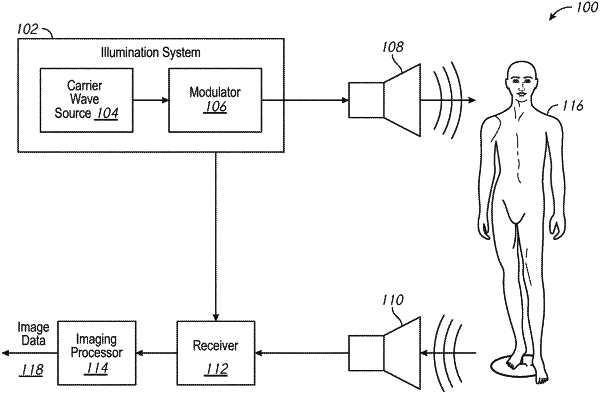| CPC G01S 13/89 (2013.01) [G01S 13/325 (2013.01); H04L 27/20 (2013.01); H04N 23/56 (2023.01); G01S 13/887 (2013.01)] | 20 Claims |

|
1. An imaging system comprising:
an illumination system, the illumination system configured to:
generate a plurality of modulated radio frequency signals from a plurality of carrier wave sources using a plurality of digital symbols comprising balanced codes; and
provide, based at least on the plurality of modulated radio frequency signals, illumination signals;
a plurality of antennas coupled to the illumination system and configured to illuminate a scene, based at least on the illumination signals;
a plurality of direct conversion receivers, each configured to receive energy from scattered illumination signals and provide receiver output, the receiver output resulting in part from scattering of the illumination signals from the scene and in part from self-jamming signals; and
an imaging processor coupled to the plurality of direct conversion receivers, the imaging processor configured to provide image data associated with the scene based on the energy from the scattered illumination signals, wherein the image data associated with the scene is provided based on adjusting the receiver output using complex values obtained during a system calibration, and wherein the system calibration is performed prior to, or subsequent to, generation of the receiver output.
|